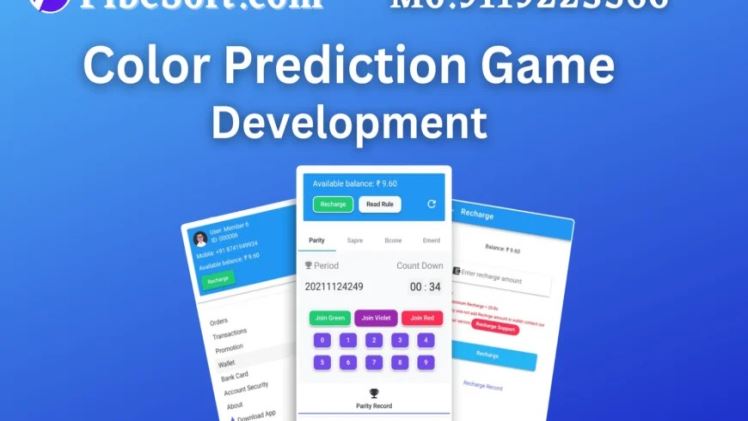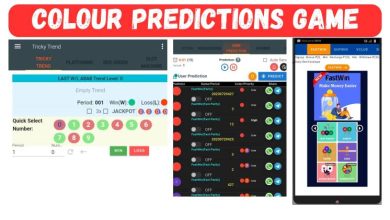The Impact of Educational Background on Color Prediction Proficiency

Color prediction games, known for their dynamic and visually engaging nature, attract players from various educational backgrounds. This article explores the intriguing relationship between educational background and proficiency in color prediction games. From cognitive skills honed in academic settings to the analytical approach fostered by certain disciplines, the influence of education on color prediction proficiency unveils a nuanced connection between learning and gaming.
Cognitive Skills Developed in Educational Settings:
Educational backgrounds contribute to the development of cognitive skills that are invaluable in color prediction games. Disciplines such as mathematics, logic, and psychology enhance critical thinking, pattern recognition, and decision-making abilities – skills that are directly applicable to the challenges presented in color prediction gaming at 91club.in.
Mathematical Aptitude and Pattern Recognition:
Individuals with a strong foundation in mathematics often excel in color prediction games. The ability to recognize numerical patterns, sequences, and trends is a skill honed through mathematical education. Players with mathematical aptitude may find themselves naturally attuned to the numerical and pattern-centric aspects of color prediction, providing them with a strategic advantage.
Logical Reasoning and Strategic Thinking:
Educational backgrounds emphasizing logical reasoning and strategic thinking contribute significantly to color prediction proficiency. Disciplines such as philosophy, engineering, and computer science foster analytical minds that excel in deducing logical connections and formulating effective strategies, key components of successful color prediction game play.
Psychological Insight and Decision-Making:
The study of psychology provides insights into human behavior and decision-making processes. Individuals with a background in psychology may exhibit heightened awareness of cognitive biases, emotional influences, and risk perceptions, factors that play a crucial role in the decision-making aspects of color prediction games.
Communication and Collaboration Skills:
Educational backgrounds that emphasize communication and collaboration skills contribute to effective teamwork in color prediction games. Games that involve group play benefit from players with backgrounds in fields such as communications, business, or social sciences, as these individuals often bring strong interpersonal skills to the gaming table.
Art and Design Aesthetics:
Educational backgrounds in art and design impart a heightened sensitivity to visual aesthetics. Players with expertise in these areas may showcase a keen eye for color harmony, graphical design, and overall visual appeal in color prediction games. Their ability to appreciate and leverage visual elements enhances their proficiency in predicting color patterns.
Multidisciplinary Approaches:
Individuals with multidisciplinary educational backgrounds bring a diverse skill set to color prediction gaming. The ability to integrate knowledge from various disciplines fosters adaptability and creativity in approaching challenges. Players with multidisciplinary perspectives may excel in devising innovative strategies that draw upon a broad range of skills.
Scientific Inquiry and Experimentation:
Scientific disciplines encourage a spirit of inquiry and experimentation. Players with backgrounds in the sciences may approach color prediction games with a systematic and experimental mindset. Their inclination to test hypotheses and adapt strategies based on empirical evidence contributes to their proficiency in the evolving landscape of color prediction.
Statistical Analysis and Probability Assessment:
Educational backgrounds that involve statistical analysis and probability assessment, such as economics or statistics, equip individuals with a quantitative approach to decision-making. Proficiency in assessing probabilities and making informed predictions aligns seamlessly with the challenges presented in color prediction games.
Continuous Learning and Adaptability:
Regardless of specific educational backgrounds, the ability to learn continuously and adapt to new challenges is a shared trait among proficient color prediction gamers. Lifelong learners, regardless of their academic focus, exhibit a resilience and openness to acquiring new strategies and skills, allowing them to stay at the forefront of color prediction proficiency.
Conclusion:
The impact of educational background on color prediction proficiency is a multifaceted exploration that underscores the diverse skills and perspectives individuals bring to the gaming arena. From mathematical prowess to artistic sensibilities, the educational journey shapes the cognitive toolkit of players, influencing how they approach, strategize, and excel in the vibrant and dynamic world of color prediction games. As players continue to embrace the educational diversity within the gaming community, the fusion of learning and play promises to elevate the overall gaming experience and contribute to the ongoing evolution of color prediction proficiency.




